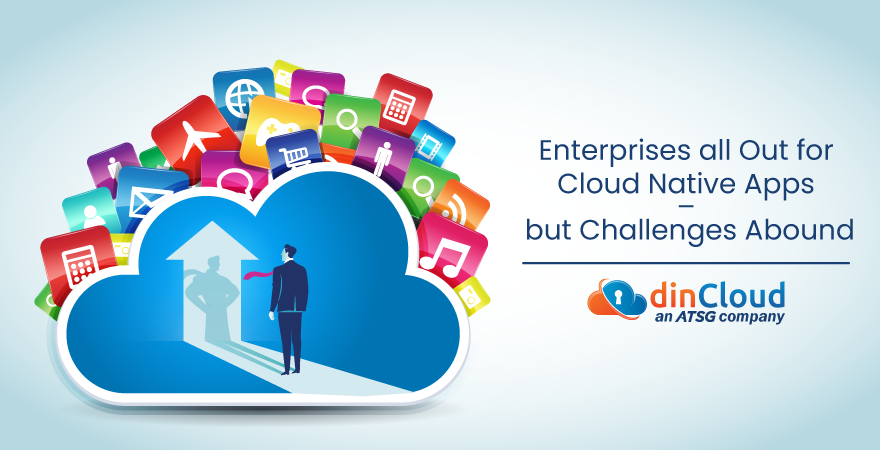The move towards Cloud Computing has always been a value proposition for enterprises of all sizes, and belonging to a wide range of industries. However, the true value from Cloud deployments can only be derived if enterprise data and apps also reside in the cloud.
In the pursuit of this goal, enterprises are adopting a whole new approach to application development and deployment. This new approach is better known as “cloud native”, which means that any app for the Cloud will be developed from the ground-up.

Previously, enterprises have been more content with a “lift and shift” approach towards cloud migrations. This does not qualify as a cloud migration, in true sense, as enterprises remain shy of deriving true value from such an approach.
Related: How to Truly Develop Applications for Cloud Infrastructures?
Cloud Migration Trends by Tigera
Recently, a study was conducted by Dimensional Research, which was sponsored by Tigera. It is a Cloud Native Application Protection Platform (CNAPP) that specializes in the security posture of apps that are deployed in the Cloud.
The survey respondents comprised of nearly 300 cyber security and IT professionals from across the world. The prime focus of the study were cloud application security, visibility and regulatory compliance.
In order to qualify as a respondent for this survey, the company chose a sample size of organizations that comprised of 10 or more employees. Secondly, all the survey respondents were tasked with container related responsibilities.
Related: The Cloud Computing Journey
Containerization in Cloud Applications
Quite consistently, containers have been the go-to option for IT professionals to deploy applications and workloads in the Cloud. Containers are self-sustained pieces of software, which also encapsulate a fully virtualized Operating System (OS).
This gives containers the ability to deploy applications and workloads successfully in a wide range of environments. These can include the public cloud, an organization’s private data center or even a personal computer (PC) or laptop.
The Challenges with Cloud Native Applications
Here is a recap of the three most pronounced challenges, when it comes to cloud native applications, followed by the results of the survey.
Related: Gartner’s Top Strategic Technology Trends for Year 2022
Security
When an enterprise moves its applications to the Cloud, it is quite logical to migrate the data as well. This results in a much wider attack surface, giving rise to a host of cyber security challenges.
Visibility
In the case of cloud native applications, there is increased to and fro movement of data, workloads and processes between the on-premise and cloud infrastructures. This underscores the need for real-time visibility into data and apps.
Compliance
Regulatory compliance is yet another challenge enterprises are increasingly facing, as they move their data and applications to the cloud. Enterprises will have to adopt a more granular approach towards where and how their data is stored in the Cloud.
Key Takeaways from Tigera Survey
75% of the surveyed enterprises were currently focusing on developing cloud native applications. This trend was further accelerated by the onset of the Covid-19 pandemic, which prompted rapid digitalization across enterprises.
According to research giant Gartner, an overwhelming 95% of new digital workloads will be deployed over cloud native infrastructures by the year 2025. Till the year 2021, this figure stood at a modest 30%, underscoring a major shift in cloud deployment trends.
An overwhelming 96% of the respondents found at least one or more aspect of securing cloud native applications as challenging. The study also highlighted the need for cloud security mechanisms to proactively identify potential security threats.
To this end, 69% of the survey respondents cited Intrusion Detection and Prevention Systems, Deep Packet Inspection (DPI), Distributed Denial of Server (DDoS) protection and Web Application Firewall (WAF) as their leading controls.
When it comes to Network Security related capabilities, 59% of the respondents said they would focus on workload access controls, while another 43% declared micro segmentation as their most sought after capability.
Related: [Gartner] Anticipates Rise in Use of Managed Mobility Services (MMS)
Barriers to Adoption of Containers
As highlighted earlier, Containerization is a quick and efficient means for enterprises to deploy applications in the Cloud. However, the survey also listed down the top barriers that enterprises are facing when it comes to deploying containerized applications.
- Lack of access to skilled IT human resources was cited as a barrier to container adoption by 56% of the surveyed enterprises.
- 53% of the respondent organizations declared infrastructural complexity as a factor impeding the deployment of containerized apps.
- The majority 52% of enterprises declared security as a major barrier to deploying applications in the form of containers.
- Container orchestration management was declared as a limiting factor by 42% of the surveyed enterprises.
- 40% of the surveyed enterprises were confronted with regulatory compliance challenges when trying to deploy containers.
Conclusion
The Tigera survey reveals interesting and useful insights when it comes to deploying cloud native applications. One thing is for sure though, the true value proposition for enterprises depends a lot on their ability to deploy cloud native apps safely and effectively.
Contact dinCloud, an ATSG company, for flexible and customizable cloud computing services that can be tailored to the unique needs of your enterprise.


